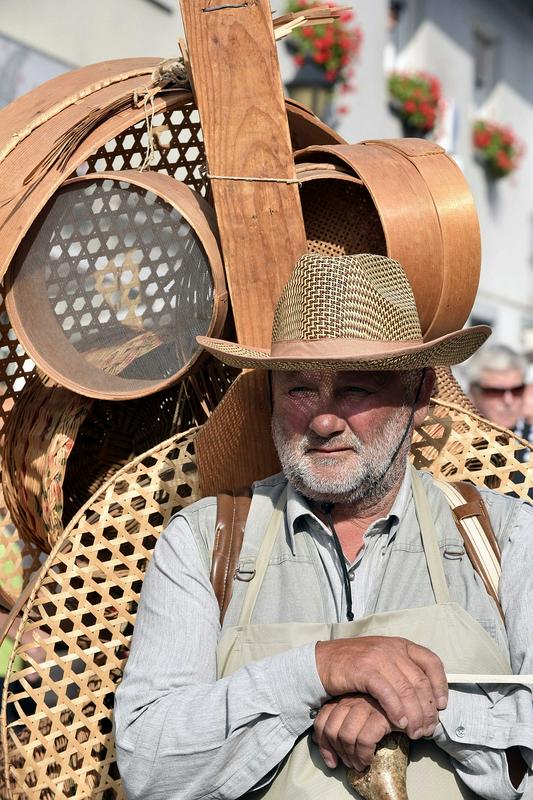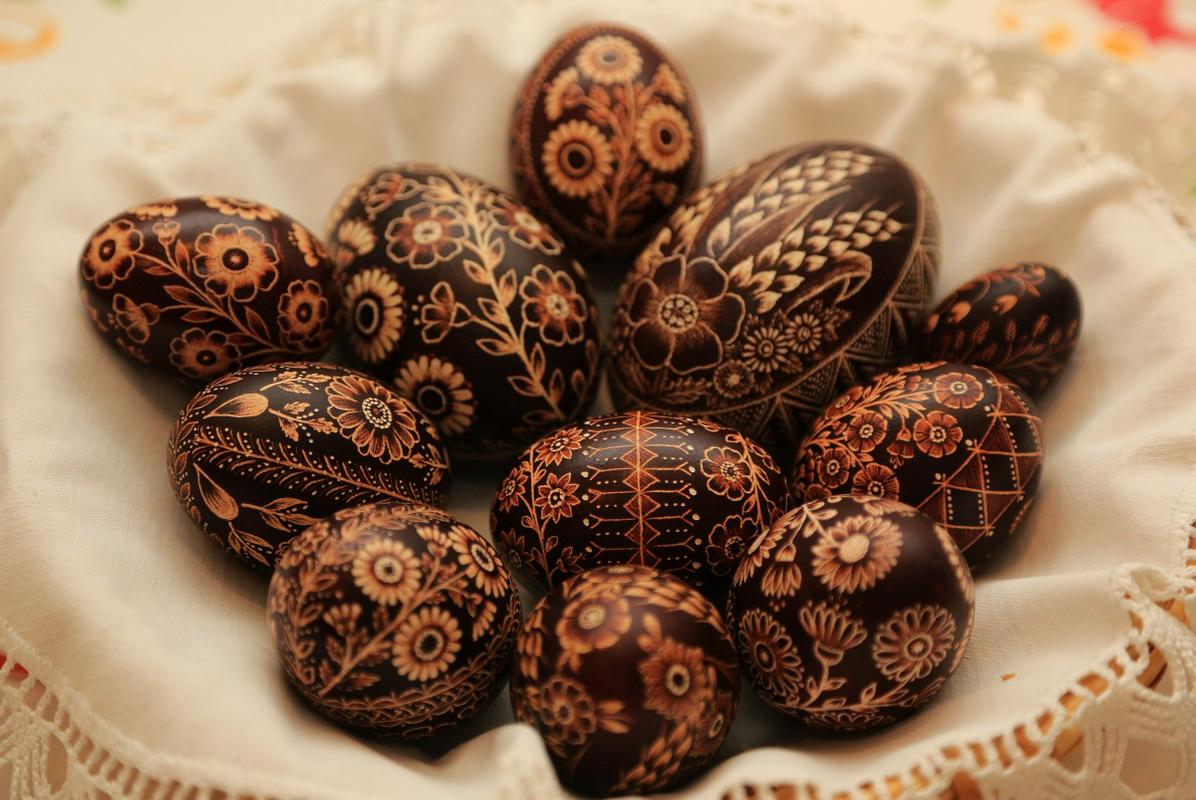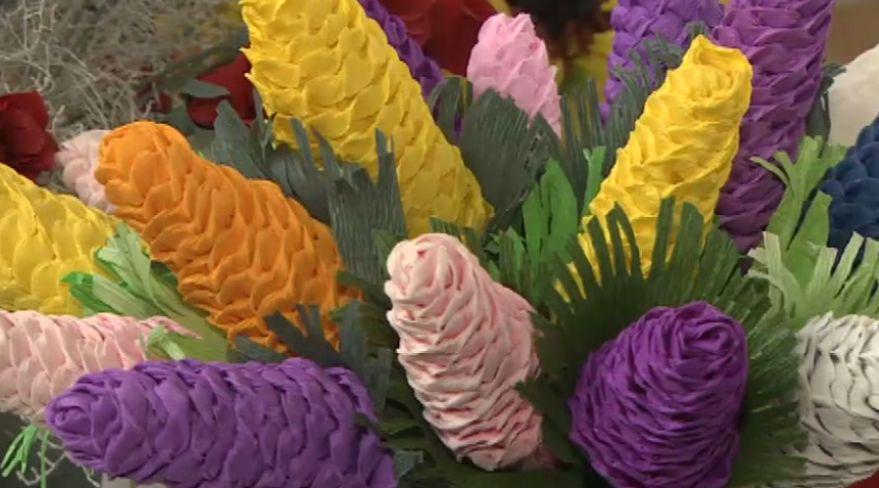



Europe is increasingly recognising the intrinsic value of creative activity with a regional flavour. These artistic pursuits are collectively referred to as arts and crafts. The term encompasses a variety of knowledge and skills, masterful command of primary materials, as well as original artistic creations of great value which enhance the quality of our existence, and life in general, through their use of materials, originality, or the message they communicate.
People have always relied on handicrafts for survival and income. Handcrafting of wooden products for everyday domestic use has grown into a commercial activity which is known in Slovenia as ‘suha roba,’ or woodwork. Slovenia’s woodwork tradition originates from the areas around Ribnica and Kočevje, although individual or small-series production of certain wood products also flourished in several other craft clusters. A local or regional pattern is also observed in the locations of pottery centres, whose signature types and variations of pottery products reflected the general taste of their customers and their lifestyles. Until the early 20th century, the most recognised craftsmen were weavers, in particular those from the area between Kranj and Škofja Loka as they made top-quality flax and hemp linen. Linen was the most popular material for making sails for ships in the Adriatic Sea. In the Middle Ages, clusters of smithies and nail-making workshops grew in certain areas in Gorenjska, e.g. in Kropa and Kamna Gorica, from where nails and other wrought iron products were carried on horseback to markets near and far.
‘Pisanice’ from Bela krajina – A natural symbol of fertility
Eggs are an ancient Indo-European symbol of spring and a natural symbol of fertility and rebirth of nature. According to the Christian tradition, eggs symbolise the resurrection of Jesus Christ, and have therefore found their way into the Easter traditions of all nations influenced by Christianity. Wax-resist techniques were traditionally used for decorating Easter eggs in many parts of Slovenia, but this traditional design, as well as ornaments, has mainly been preserved in Bela krajina. In this area, richly decorated Easter eggs are called ‘pisanice’ (‘pisati’ is Slovene for ‘write’) because wax ornaments are drawn, or ‘written’, on eggs with a special pen-like tool which is used to melt the wax over the candle of a flame. Ornaments in the colour of eggshell are made first, and then followed by other dyes. After each application, working in layers form lighter to darker hues, wax is used again to cover the parts of the eggshell on which ornament details will be made.
Bags and baskets made of maize husks
Maize husks are used to weave baskets and bags of different sizes. The products are made from the husks of a local variety of home-grown maize and are completely natural. Corn husk baskets are very useful products, intended for families who appreciate local crafts. Small bags are popular decorative products. The making of maize husk products requires a lot of patience and love. Each product is unique and therefore even more original.
Dražgoški kruhki – Honeybread delights
The intricate handmade patterns that adorn the Dražgoše honeybread biscuits have earned these a special place among figurative and ornamental honeybread products. Some experts believe that figurative and ornamental honeybread biscuits spread to the countryside under the influence of certain monasteries. The Ursuline Sisters in Ljubljana used to shape and bake honey-based ‘poprovci’ cookies until World War II. Honeybread bakeries in towns made these biscuits by pressing honey-based dough into wooden moulds hand-carved by craftsmen from the area of Dražgoše or Škofja Loka. The oldest and most original shapes are decorated hearts and semi-circles, which boys and girls would exchange on the Epiphany. The Epiphany used to be considered a holiday for young maidens since the Three Wise Men were believed to be successful matchmakers.
Tobacco pipes from Gorjuše
The beginning of tobacco pipe making dates back to the 18th century. The craft flourished in the area of Bohinj, in particular in the village of Gorjuše and its surroundings. Pipes were made mostly of pearwood or several other types of wood and then inlaid with mother-of-pearl, pearl shell, or silver ornaments. Pipemaking was a seasonal activity which men engaged in during late autumn and winter to earn additional income. At its peak, several thousand pipes were made and sold not only in Slovenia and other provinces of Austria-Hungary, but also in England and America. A report from the early 20th century states that the Gorjuše pipemakers carved 3000 to 3500 pipes every year. The most popular design was the hefty ‘čedra,’ which became known under its original name even abroad.
Accordions
Accordion production and playing is of relatively recent origin. However, since the second half of the 19th century the popularity of the instrument has evolved rapidly into a creative movement and craft. After World War II accordion playing grew to unforeseen dimensions. It soon became an essential element of the mass culture phenomenon known as Slovenian national folk music. Before that, the accordion was primarily used by music makers performing in villages and small towns at various public gatherings and events. Before the rise in the instrument’s popularity, the main instruments used by village musicians were the dulcimer and zither. In Slovenia, accordions were produced by many craftspeople and craft workshops. Through technological innovations and specific sound designs, these workshops have gradually created a range of feature- or workshop-specific instruments. The diatonic button accordion, or ‘frajtonarica’ in Slovene, is currently the most popular type of the instrument.
Stone masonry – Shapes torn from earth
Slovenia’s heritage is rich in the use of stone, which was modified into various shapes by the skilled hands of stonecutters and masons. Masonry products include window frames, door portals and other construction elements, troughs and bowls, stone tables placed under mighty tree tops, and other stone-containing implements and containers used in viticulture and wine-making, oil production, and certain other crafts. Stone was also used to make certain tools and containers which were indispensable in the cooking, or preserving, of food. The fields of application of natural stone were most diverse in the Mediterranean and near the sea, primarily in the Karst, where stone was so important that it should be capitalised.
Wrought-iron craft - Mysterious men who can tame fire
Blacksmiths enjoy a respected position in Slovenia's heritage. These men worked with fire, but were also entrusted with other tasks, such as inspecting slaughtered meat, and treating sick people and animals. Blacksmiths knew certain technological procedures that were unknown to most men, which earned them general respect. Within the general concept of metal handicrafts, these craftsmen were either tool makers or farriers. Another profession that should be added to the previous two is artist blacksmith. Artist blacksmiths were able to carry out demanding procedures to make metal furniture and decoration for homes and public areas. Another feature of blacksmiths is that they need plenty of tools, which each young blacksmith had to make for himself before he could start developing his craft and become a master craftsman.
Lectar hearts – Stirring memories and making love shine
Honeybread and candle making are traditional crafts that can be traced back more than 1300 years. Honey-based dough is manually pressed into handmade moulds and the biscuits are then baked or air-dried. When baked or dry, the biscuits are dyed and glazed with coloured sugar icing. Dried biscuits can be decorated with pictures, tiny mirrors, and messages about love and various other subjects. Figurative lectar biscuits shaped like little horses, dolls, or birds mark the pinnacle of this craft, with lectar hearts as a symbol of love, joy, and celebration proudly taking the lead. Lectar hearts are considered a token of heart-felt wishes and are perfect gifts for anniversaries, birthday parties, and weddings.
Paper flowers – They will never die
Up until the end of World War II, the craft of making paper flowers flourished in the countryside. Most commonly, these flowers were made from crepe streamers or special flower paper. In certain areas paper flowers were waxed for better durability and resistance. These artificial flowers were used to make funeral wreaths and cross garlands, as well as wedding bouquets and floral wreaths, and bouquets for soldiers and newly ordained priests. Making flowers out of silk, or any other type of textile, was particularly popular in towns as a more sophisticated form of the traditional craft. In all-white wedding bouquets certain rules had to be followed: the bride and groom both wore button holes, the bride also had a floral wreaths in her hair and a wedding bouquet. Button-holes for the best man and maid of honour were slightly smaller in size, while other members of the wedding party only wore a single blossom.
Wicker baskets – Weaving for usefulness
Basket weaving is the most widespread traditional craft still practised in Slovenia. Its popularity is not due to specific craft preservation measures, but rather due to the practicality and usefulness of these ‘evergreen’ products. The diversity of Slovenia’s natural environment offers a variety of primary materials, i.e. different types of plant stalks, which skilled weavers can turn into baskets, boxes and other products. Along with slender willow and hazel stems or splints, common basketry materials also include straw, clematis, maize husks, as well as chestnut, spruce, dogwood, and other trees and shrubs. The basketry tradition in Slovenia is highly diverse; a combination of local self-taught craftspeople and focused handicraft pursuits, based on skills acquired through basketry courses and schools.
Painted beehive panels
Featured only in the Slovenian ethnic territory, painted beehive panels are outstanding phenomenon in the history of fine arts in Slovenia. The practice of decorating, or marking, beehives with a series of ornamental, religious, humorous, historical and everyday motifs can be followed from the mid-18th century to the early 20th century, when changes in beekeeping practices led to the demise of this form of folk art. Slovenia’s heritage of beehive panels consists of over 600 motifs adorning at least 50,000 beehive front panels. Sadly, only 3000 such beehive panels have been preserved and are now stored in museums and private collections. The motifs are predominantly figurative, secular in nature. Motifs which illustrate human flaws and reduce various professions were among the most popular.
‘Remenke’ – Easter eggs from Prekmurje
The Prekmurje tradition of making ‘remenke’ or ‘remenice’ spans over one hundred years. The complex batik technique that uses three dyes – white, red, and black – has only been preserved in Dobrovnik. Several types of Easter eggs are made, but typical Prekmurje ornaments in batik continue to be the most popular. Before eggs are dyed, archaic ornate patterns and foliage ornaments are drawn on them in molten wax using a stylus. This special wax-resistant technique is also used with lace-based patterns, and followed by drilling and polishing.
Today ‘remenke’ are mainly a lovely souvenir from the Prekmurje region. The tradition has been kept alive in Goričko, Easter eggs from this area feature a diversity of floral ornaments and wheat stalks. Another peculiar feature of ‘remenke’ is a rosette pattern on the upper and lower end of the egg. Other motifs expressing creativity and imagination can also be used.
Cradles – Rocking into life
By the first half of the 20th century, most newborn babies in the countryside had been rocked into life lying in cradles. To this day, cradles continue to be understood as a symbol of birth. An overview of the history of cradles shows that this rocking furniture element as a product of self-taught or workshop-trained craftsmen was relatively late to come into common use. It became relatively widespread in the 19th century. At that time, most cradles were painted with symbols, religious motifs, floral ornaments, and geometric patterns. In most cases, ornate designs were a continuation of the Baroque tradition. The list of popular motifs included a four- or five-pointed star, or ‘monna taca,’ which was painted on the shorter side of the cradle. . According to ancient folk beliefs, this symbol protected the baby from the harmful influences of nightmares.
Wooden-spoon holders – ‘Suha roba,' one of the oldest Slovenian trademarks
Over the centuries, trading in ‘suha roba,’ or woodenware, has assumed international dimensions. The rich selection of products, which has varied through the years, has always included wooden spoons and spoon holders. These were actually designed as wall-mounted wooden holders or storage boxes for spoons and other eating utensils. The origin of these wall racks remains unclear. The oldest specimens found date back to the 17th century although it was only in the 19th century that woodenware came into common use in towns and in the countryside. At this time, woodenware was no longer crafted exclusively by carpenters; products were often made and decorated by self-taught artists, in particularly during winter months. Several variations and artistic designs were created, and spoon holders often included carved, inlaid or painted decorations.
Chamber of Crafts and Small Business of Slovenia, Sinfo


































































